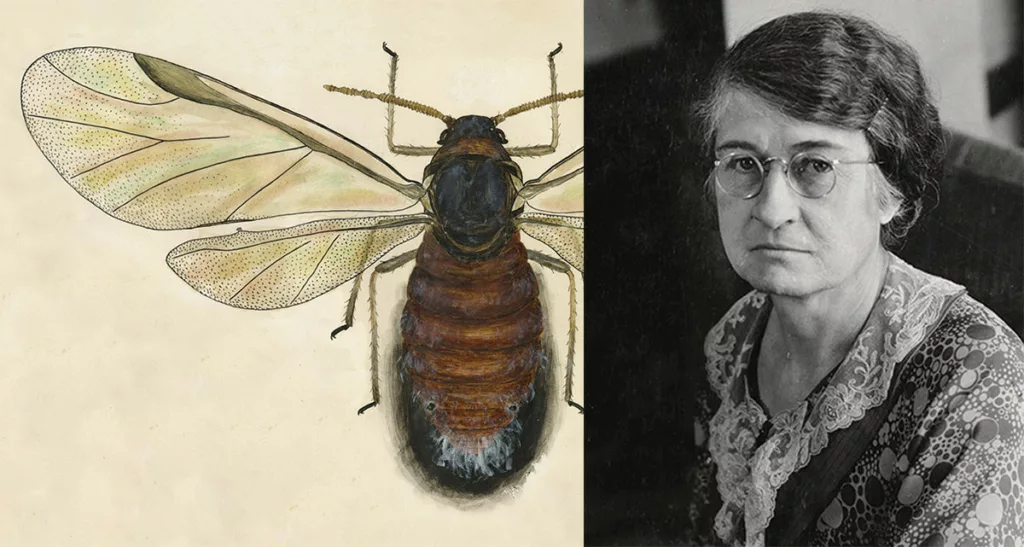Miriam Palmer (M.S., ’25) blossomed when she met a challenge.
In the early 1900s, Palmer was a promising entomologist and scientific illustrator at the Colorado Agricultural College (now Colorado State University). When a horticulture professor showed her a wax apple he brought back from an out-of-state trip, he challenged her to create similar models of Colorado’s prize-winning apples.
The makers of the professor’s specimen warned they couldn’t send directions for how to make the replicas. The process was “too hard, too tricky.”
Palmer was undeterred. After a few weeks of experimenting with cracking, shrinking wax, she solved the puzzle. For two years, she sculpted and painted scientifically accurate wax replicas of fruit, 83 of which survive today, housed and viewable at the Morgan Library.
Four decades of science and art
Recruited by entomology professor C.P. Gillette, Palmer had arrived in Fort Collins in 1904 to begin her illustrious 43-year career as a scientific illustrator, physiology instructor, and world-renowned aphid expert.
In the 1900s, Fort Collins’ roads were still dirt, and building conditions on campus were, by modern standards, rugged. Until 1905, she worked in Old Main, the first classroom building on campus and home to the college’s burgeoning insect collection.
“The Oval was an alfalfa field, and when the wind blew […] we’d all be covered in dust,” remembered Palmer during an interview with CSU history professor James Hansen in 1974, three years before her passing.
Palmer was passionate about drawing, but the fine arts didn’t appeal to her. She took joy in meticulous precision, using a crow quill pen and India ink to render beautiful and accurate illustrations of plants and insects for state entomology reports, Experiment Station bulletins, pamphlets, and books.
Palmer had a taste for adventure, too, and jumped at any opportunity to collect aphids in the mountains. In her interview with Hansen, Palmer still recalled one harrowing drive from Fort Collins to Grand Junction in a car with no lights, horn, or brakes. She didn’t bring back any aphids.

Aphid authority
Palmer retired from Colorado A&M in 1947. She wasn’t ready to put down her pen, though, and published a reference book in 1952. Aphids of the Rocky Mountain Region cemented her reputation nationally and globally as a leading authority on aphids.
“I got a building named after me, ‘cause I wrote a book,” she modestly recounted to Hansen.
The Palmer building on Laurel Street was built in 1967 as housing for women students, and now holds offices for Housing & Dining Services.
Palmer’s legacy as a scientist is still bearing fruit. More than a hundred years after she solved the puzzle of their creation, her wax apple replicas are helping Colorado fruit-growers enrich the genetic diversity of apple orchards.
In 2019, the Montezuma Orchard Restoration Project, based in southwest Colorado, used the replica collection to corroborate evidence of their rediscovery of the Colorado Orange apple tree, a popular variety long thought extinct. Today, several hundred trees and grafted scions are growing at homes, farms, and nurseries across Colorado and in other states.
The first fruits from these trees are expected in the next few years.